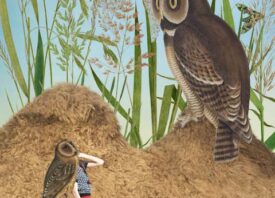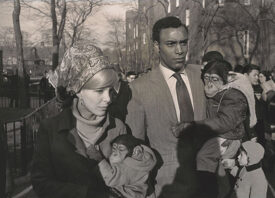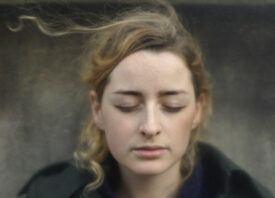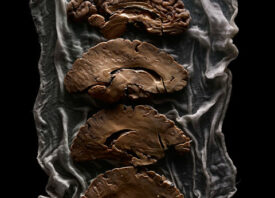Search this site
Can Photography Help Depression?

About a year and a half ago, a study from researchers Lancaster University and University of Sheffield in the United Kingdom suggested that a daily photography practice could improve our wellbeing. By taking just one photo a day for two months, participants in the study made time reminisce and tell stories, get outside and explore, and interact with their communities. Some reported feeling less lonely; for others, photography became a way to manage stress or grief.
According to the World Health Organization, an estimated 264 million people suffer from depression. The disorder isn’t limited by age, background, or location, and it’s one that can touch anyone. If taking photos on a regular basis can foster wellbeing in general, what can it mean for those of us who live with depression? Can photography make it easier to cope in the moment, and can it help us to process our experiences over time?
We interviewed five artists about the relationship between their depression and their photography practice. In the process, we found that the camera can mean different things to different people. While they all said photography helped them in some way, shape, or form, their methods and reasons were all unique. Here are just a few of their stories.

Providing a motivational push
First and foremost, photography can serve a practical purpose for those struggling with depression by providing structure and incentive.
“What worked for me might not work for others, but I think any creative outlet has the potential to benefit someone who struggles with their mental health,” Edinburgh photographer Daniel Smith explains. “The photographic process helped me in dealing with my depression by giving me the motivation to create something, and, at a very basic level, it made me get out of the house.

“For my Fade Out project, I almost always had someone with me: either my girlfriend or one of my close friends. This was, in itself, a kind of therapy. I was able to share my creative process with people I trusted and we even got talking about depression, how it affects people, and how best to portray that photographically.
“It wasn’t easy to start this project, but I found my momentum increased as time went on. The more I created, the more I wanted to create.”

Working through trauma
For Texas fine art photographer Ashley Whitt, a consistent art practice has become a way to work through times of acute suffering, and photography has provided a safe haven to process events in real time. “Making images, sculptural objects, and more recently videos/GIFs are how I express ideas and emotions too difficult for me to communicate in words,” she says.
“Most recently, photography is helping me to navigate through a particularly dark time in my life, the recent demise and premature death of my father (who was an alcoholic since before I was born). Making images during the chaos leading up to his death and the months following almost became a distraction from the reality of what his death meant.
“Even though the artworks I’ve made were about him, about his death, about his addictions, about these really heavy and difficult things to talk about, it helped create this protective layer between myself and what happened.”

Exerting control
“Maintaining an active studio practice (in photography, sculptural bookmaking, video/moving images) during bouts of depression became (and continues to be) an anchor during uncertain times of my life,” Whitt tells us. “When I cannot control other aspects of my life, I find comfort in the worlds I can create in front of the camera or through the manipulation of art materials into objects or moving images.
“Photography and art also help me to feel like I have some control over an uncontrollable situation. I could not control what happened to my dad, but I can control the way I make art and how I process the events of the past eight months.”

Making sense of it all
It’s true that, for some, photography can become an escape and an outlet for releasing or “letting go” of pain, but for the South African photographer Tsoku Maela, it served the opposite purpose. Instead of avoiding or retreating from his thoughts, his camera empowered him to confront them directly.
“I don’t see depression or anxiety as these monsters we need to rid ourselves of,” he tells us. “Making the series Abstract Peaces required me to go into all of it. I had to co-exist with my depression and see its face for the first time. What I discovered was that depression wasn’t scary, just confusing.
“Creativity opens doors for us to face our conditions and reality. To begin making some sense of it. So in that sense, photography can create that space of introspection. My battle with depression was a battle of the spirit and creating was my way of connecting to that spirit and learning to listen instead of pushing away every negative feeling I had.
“My goal was to always understand why I felt the way I did at the time, and one could say that is the intent of therapy. But for me, the process of creation has been that therapist, and I haven’t felt a day of despair in a very long time.”

Finding the words
“There was no specific way in which photography helped me other than the fact that it allowed me to say what I wanted to say,” Madrid artist Marianna Cardenio explains. “When you go through depression, you also feel like no one can really understand you. You don’t want people’s judgments to hurt you, so you mostly keep silent trying to fight the struggle within yourself.
“I worked with a psychotherapist who was able to read through my photographs what I was experiencing during my depression. That helped me to figure out also with words how I was feeling and why.
“Somehow, when you become conscious about the reasons, the pain disappears a bit. Things start making more sense and as such, also the way out if it becomes more clear. Once I let out some of my negative thoughts and feelings with photography, I could finally have the chance to free my head and gain more strength.”

Rediscovering joy
While getting started and finding motivation could prove challenging for the artists we interviewed, photography often became a source of pleasure, enjoyment, and play.
“I think the type of work I do is helpful as it can offer a new perspective on a difficult experience,” Cardiff photographer Suzie Larke says. “The process of making images is really good fun. I often have a laugh on shoots with the people I work with. I’m not a therapist, nor have I ever worked with an art therapist, but the process can be incredibly cathartic.

“I found it difficult to motivate myself to do anything when I was depressed, so I did most of my self-portraiture retrospectively–when I was in a better place emotionally, When I first started taking pictures of myself, I never imagined I would be exhibiting them publicly. I was just experimenting and having fun making different kinds of images.
“Previously, I’d worked mainly commercially. I wanted to try out a new approach to photography and, through the process of taking pictures, stuff seemed to just come out. For those viewing my work, I hope that they may take home a message that mental health difficulties–while often felt beyond articulation, or incomprehensible by others–are something that can be shared with and appreciated by the outside world and need not be experienced in isolation.”

Connecting with others
This notion of isolation–and the promise of connection in spite of the stigma and misunderstandings surrounding mental health–is something that bound many of the artists we interviewed.
“I am in space of gratitude every day for photography,” Maela says. “The work that I have made, most especially the work on mental health, has reached so many people across the world. I have received messages almost on a weekly basis since 2016. People talking about their experiences with mental illnesses and their lives in general. Complete strangers.
“I love all of those people, even though we have never met, because I have an idea of what it feels like for them. These conversations and experiences make the whole process worthwhile. Making the work can be a blur at times, so I only get to understand it through these interactions. Many incredible people all over the world are keeping the conversation alive. That makes me very happy and hopeful.”
Read this next: The Many Uses of Images in Photography Therapy



